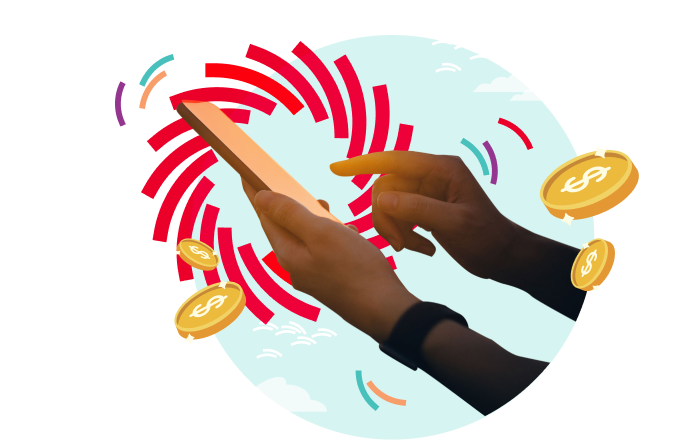I racked up losses amounting to S$15,000 in crypto and a few Gs in Forex and commodities. Let’s just say it was an expensive tuition lesson for a budding salaryman fresh out of university.
I grew up with my eyes wide open to the world of investments – my parents always talked openly about it and Dad said, “Son, you’ll have to try one day – but with your own money.” I was exposed to various investment vehicles and reading material from the age of 16 and wanted to wet my proverbial feet. I was fascinated with the possibility of multiplying my money and winning, and reading up on the story of Japanese Trader BNF got me hooked. I mean, my guy here made US$150 million from a mere US$13,000.
Suffice to say, my reality check bounced. I savoured my wins getting into Bitcoin early, but the losses to come were jarring to say the least.
I lost $4,000 trading the USD/JPY, USD/CNY pairs when I was 21.
Another $15,000 slipped away when I delved into crypto and NFTs, the new kids on the investment block, when I was 24.
Dear reader, I’m not writing this to scare you, but I’m sharing my investment journey so that you don’t fall into the same costly trap of chasing wins without setting the foundation right – specifically, the foundation of savings and protection before getting into investing. If you’ve got your bases covered, investing can help you grow your money, if done right. Having achieved some form of financial stability since then, I want to share what wish I knew when I embarked on my investment journey.
Have a clear vision of how your personal finance pie chart should look – and stick to it
The chart above is just a guideline for how to split your money – 50% for essentials needs, 30% for discretionary spending and 20% for savings, investments and emergencies. It’s just a guideline, though. You decide what proportion works best for you.
Personally, I break it down into safe and risky investments, insurance and shopping, as I want my money to work for me (cliché, I know).
For now, I’m prioritising saving and banking on safer investments (ETFs, blue chips), while having some set aside for riskier investments, insurance and shopping. However, this all changes according to priorities and market fluctuations, not taking portfolio rebalancing into account.
Why is it important to have a clear vision of how your personal finance pie chart should look? Understanding your needs, what you expect to spend on, and if you plan to invest – how much you can afford to lose helps you to ensure your budgeting is attuned to your lifestyle and you’ll be able to see if you’re investing too much without having an emergency fund. As you come up with your own personal finance pie chart, just remember that as a baseline, all young professionals should have medical insurance – your employer might cover you, but you’ll be unprotected if you’re in between jobs or not eligible for your company’s group policy yet.
Know the difference between safe and risky investments
Gamestop (GME) vs ETFs (Exchange-traded funds)? Mutual funds or fixed deposits? Investments exist in a whole multiverse of their own and any scheme or product that sells you a lofty dream of a high guaranteed return might just be another scam around the corner.
With the advent of cryptocurrencies and NFTs, we’ve seen lots of fraudsters. In the BitConnect case, for example, US$2.4 billion was amassed from a Ponzi scheme by passing on the funds of new investors to earlier investors – a high stakes game of Hot Potato.
Aside from practising due diligence to avoid walking into a fraud trap, it pays to understand your mentality towards investing and purpose – for example, are you going all in and hoping to get millions back? Are apes together truly strong?
While the high-risk investments discussed on the popular WallStreetBets Reddit forum may seem like a quick way to score big wins, there are also safer, quieter investments such as Treasury bills and fixed deposits. These financial instruments are geared more towards stability and security and are backed by either financial institutions or governments, with a lower chance of default.
Tackle savings and protection first
When it comes to how much money to invest, I follow my own priorities pyramid. Now, I’m no certified financial adviser (I don’t have certifications like the M5 or M9) but this is my personal approach to managing my money.
In my three-layered priorities pyramid that you see in the picture above, the bottom layer, Save, is what I prioritise the most. My second priority is the middle Protect layer, and my third priority is the top Invest layer. Once the Save and Protect layers are in order, I’m ready to tackle the Invest layer at the top.
Let me explain further. My personal philosophy is that it’s financially healthy to have cash stashed away in a rainy day fund to safeguard against any misfortune or emergencies (touch wood!). After setting aside a comfortable amount, getting myself and my loved ones insured helps me live life with peace of mind. Only after I’ve secured these two fundamental layers do I invest my remaining funds in a disciplined and consistent manner while looking out for rare opportunities in the market.
TLDR, I focused a lot (too much) on investments in the earlier stages of my life, over-emphasising on maximising my returns and ignoring protection.
It’s all fun and games until accidents come along though. In my case, because I didn’t have medical insurance, I had to pay for my hospitalisation bill out of my MediSave account. This drained a significant part of my personal savings, which could’ve otherwise gone towards investments or other things.
As a reformed insurance non-believer, these days I try to plan for and purchase insurance products according to my life stage, while still saving and investing the same amounts. Quick example – I signed up for personal accident insurance when I realised I was an adrenaline junkie. I took out a life insurance plan too, as I’ll never know when it might come in clutch.
I’m a firm advocate for first understanding yourself and buying what you need without holding on to overlapping plans and investing the rest after – This might help you save some money and time and spare you from anxiety down the road.
TLDR – Save, Protect THEN Invest.





